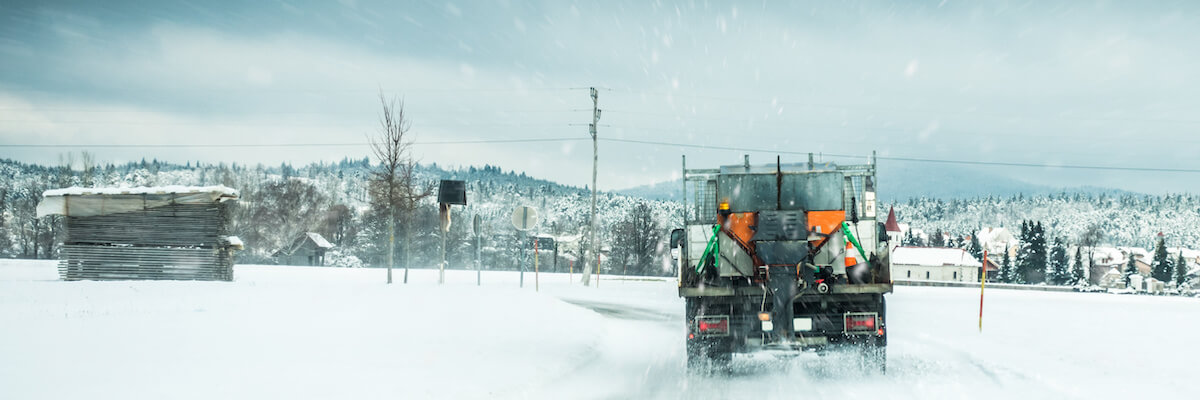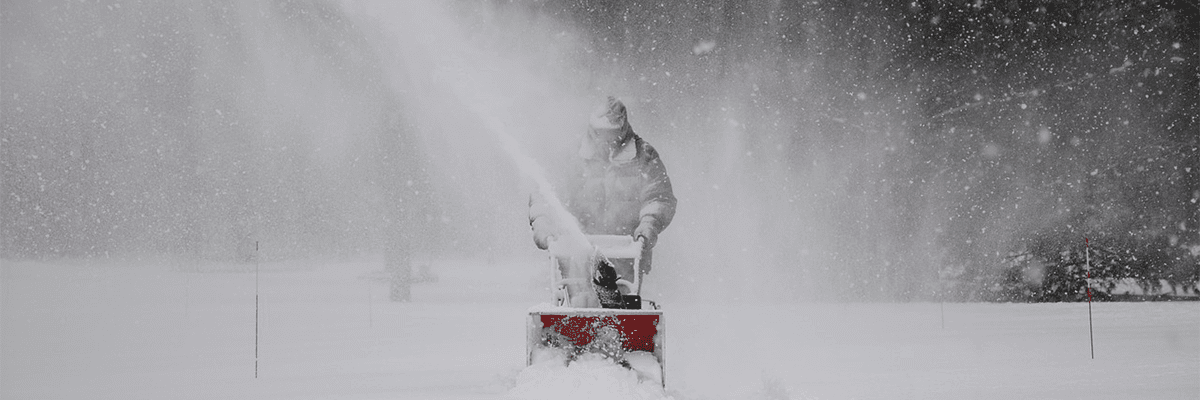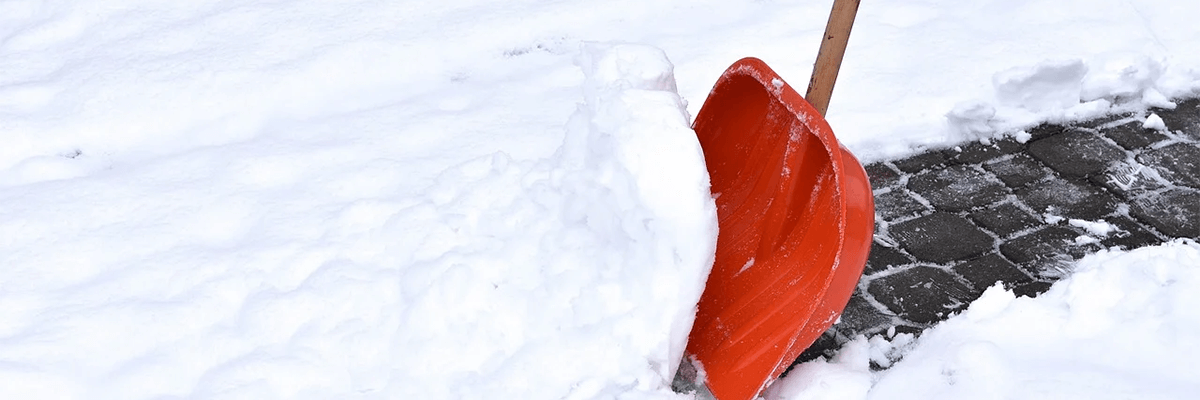Cost to remove snow: Snow removal pricing formula

Set up a snow removal pricing formula so that you can offer your customers the best prices while ensuring you continue to drive your business forward.
If you live somewhere with snowy winters, you know how important snow removal is. But not many people like removing snow from their own property, making it a great business idea.
Shoveling snow is physically demanding and even dangerous, which is why many homeowners contract a snow removal company to help them out. As a snow removal business, you most likely have the right equipment to take most of the physical labor out of the job.
However, that equipment can be pricey, and you want to make sure that your business brings in enough revenue to cover your overhead costs. This is where a snow removal pricing formula can help you out.
This guide will help you set up a snow removal pricing formula so that you can offer your customers the best prices while ensuring you continue to drive your business forward.
Ways to set up a snow removal pricing formula
Some people see snow removal as one of the easier jobs to price, but it isn’t always as simple as shoveling walkways.
Your primary goal is to clear the snow off of your customer’s property, but similarly to landscaping, you also want to ensure that everything looks good, even while covered with snow and ice.
As a snow removal business, you can offer a wide range of services to help your customer keep their property safe and clear.
These services include:
- Snowplowing.
- Snow blowing.
- Shoveling.
- Sanding.
- Salting.
- Roof snow removal.
Although not every job will require all of these services, it is a good idea to have as many of these services available to your customers. This way, you can meet their every need!
Now, when it comes to charging for your services, there are several ways you can go about it, including:
- Per push.
- Per event.
- Per hour.
- Seasonal contract.
- Multi-seasonal contract.
The way you choose to charge for your services will determine how you set up your snow removal pricing formula.
Let’s dive deeper into each of these pricing methods.
Per push
Per push snow removal means that the customer pays a flat rate every time you visit.
Customers who choose this option usually keep up with snow removal themselves and enlist your help during the odd heavy snowfall.
Sometimes customers who choose this option, however, underestimate how often heavy snowfalls occur in the winter.
The billing per push can be by the hour or by the inch. You can also offer one flat fee, but it’s often difficult to estimate the amount of work that is required beforehand, especially if there’s an ongoing storm.
Per event
A snow event is simply a significant snowfall, such as a snowstorm.
This is the best pricing option for areas with very little snow or light snowfalls. It isn’t ideal for areas with snowy winters.
If you charge by snow event, it may be easier to charge a flat rate within a 24-hour window, therefore eliminating the need to use a snow removal pricing formula.
However, if it is an ongoing storm, you may be required to make more than one visit within that period. Clarify this with your customer beforehand, and confirm whether or not multiple visits will be possible and an additional price.
Per hour
Charging per hour is one of the simpler ways to calculating snow removal.
The snow removal pricing formula you would use for this option requires:
- The number of workers you need.
- Your workers’ hourly rates.
- The estimated number of hours to complete the job.
Use this formula to calculate the total price of a snow removal job:
Hourly rate x number of workers x number of hours = total price
Your customer will most likely want an estimate on how long it will take to remove the snow, and as with calculating snow removal per event, this is where your knowledge and experience come in.
Let’s say that you are being contracted to remove snow from a large commercial parking lot. You estimate that the work will take 2 hours, and require two of your workers, who you each pay a $20 hourly rate.
First, calculate the total hourly rate:
$20 x 2 workers = $40
Then, multiply that by the estimated number of hours:
$40 x 2 hours = $80
Of course, $80 will not be your final estimate, as it doesn’t make any revenue for your business, and the labor cost is not the only expense you need to consider when it comes to snow removal (more on this later).
Per inch
Charging per inch is one of the most popular options when it comes to pricing snow removal as it is a simple concept. You price the total cost of snow removal for your customer per inch of snow on the ground.
You typically want to charge a flat rate for the first 4-6 inches of snow, then add an additional amount per additional inch of snow.
Per season
A seasonal contract is essentially a subscription to your services. Basically, your customer pays once, and enjoys your services for a certain amount of time, until they have to pay again.
Subscription has become an increasingly popular payment option in the snow removal business, especially in areas that get a lot of snow throughout the winter.
When coming up with the pricing for a seasonal contract, you should take the snow trends over the past 10-15 years into consideration. This will help you set a reasonable price for your customers and your business.
Make sure that you make it clear to your customer when the billable cycle ends for their annual contract. Otherwise, you run the risk of a poor customer experience.
Bonus! Multi-season contracts
If you have a customer who is really impressed with your services, they will most likely want to continue to work with you for the long term. If this is the case, you want to offer them a multi-seasonal contract.
Instead of an annual snow removal contract, you can offer an extended option for your customers that covers several seasons. This is a beneficial option for both parties.
For your client, if one year there’s a light snowfall, your services can roll over to the following year. The benefit for your business is that you have a long-term client.
Multi-seasonal contracts are more common for the commercial industry, but you may have some residential customers interested in this option as well.
To continue to grow your revenue, make sure that you implement an annual rate increase of 1 – 6% with your multi-seasonal client to account for inflation.
These pricing options give you an idea of how to go about setting up your snow removal pricing formula, but there are other factors to consider when considering the cost of snow removal.
Snow removal pricing formula cost factors

Image credit: MMartin1202 via Pixabay
Even though snow removal contractors usually estimate the average total snowfall expected for the year, like all elements, snow is unpredictable.
There are always predictions on how much snow an area will get, but you really don’t know the extent of a storm until the snow hits the ground. In any case, you want to protect your business, and therefore charge prices that are fair, but also cover your overhead costs.
Other than the amount of snow, there are several factors that influence how you price a snow removal job.
Amount of snow
The amount of snow needing to be cleared is the most important factor in pricing any snow removal job. This is especially important if you’re working in an area that gets a lot of snow, or if your pricing model is per inch.
At the beginning of every season, you should estimate the amount of expected snowfall for the year to help you predict your potential expenses and revenue.
Driveway size
Removing snow from a driveway may be one of the simpler snow removal jobs your business may do, but there are still several details to consider when pricing such a job.
If you’re dealing with residential driveways, the size of the driveway will be the biggest determining factor of the cost of the job. The larger the driveway, the more work it will take to clear.
Factors that affect the cost of standard driveway snow removal include:
- Length.
- Condition.
- Slope.
- Design.
- Material (concrete, dirt, gravel, etc.).
It’s best to include the square footage and details of the driveway in your snow removal pricing formula to help you determine the hourly rate. Make sure to take accurate property measurements to create a precise estimate.
Driveway snow removal may sometimes include the sidewalk, in which case you want to factor that into your price as well.
Equipment used
Other than labor, equipment is most likely your business’s biggest expense. You’ll want to charge more for jobs that use more expensive equipment, especially if they run on gas.
For example, the average range of an electric-powered snow blower is $100 – 900, while a gas-powered snow blower can cost anywhere from $250 – 2300.
Depending on the job, you may require the following equipment:
- Snow plows.
- Snow blowers (electric or gas).
- Shovels.
- Snow pusher.
- Ice chopper.
- Special roof equipment.
If you don’t already own the equipment you need for a specific job, you can rent it and add the cost to your snow removal estimate template. Tell your customer up front what equipment will be used to complete the job. This gives them a better understanding of why you are charging the prices you are.
If you don’t see the download form, download template here.

Location and additional work
As a snow removal service, the four locations that you will most likely be dealing with are:
- Sidewalks.
- Driveways.
- Roofs.
- Parking lots.
Sidewalks will typically be the least expensive service you offer, while roofs may be the most expensive service that you offer.
Now that you have an idea of snow removal costs, you can start to figure out how much your business should charge.
There may be other miscellaneous costs that you have to factor into your price. For example, if a tree is in the way of roof access, and you have the tools and experience, you can offer tree trimming as a service to your customer as well.
How much to charge for snow removal

Image credit: JillWellington via Pixabay
Now for the real work: figuring out how much to charge for snow removal services.
Prices in the snow removal industry vary, so it could be a challenge to find the prices that work best for your business. However, there are some industry costs that can help you stay competitive and determine what prices will bring you revenue.
Here are the steps to determining how much you should charge for a snow removal job.
Step 1: Determine minimum snow removal prices
The average cost of snow removal ranges from $25 – 75 an hour, or $200 – 600 per season.
Here is the average price per pricing model:
| Per hour | $25 – $75 |
| Per season | $350 – $450* |
| Per event | $30 – $100 |
| Per push | $30 – $75 |
| Per inch | $60 – $95** |
*limit set at either inches or number of visits.
**per 6 inches, and an additional $3-$10 per inch beyond that price.
As mentioned, the minimum price you set depends on a number of factors other than snow. Choose a minimum price that is competitive, but will still cover all of your expenses.
Once you determine your minimum snow removal price, create your snow removal estimate template around it and factor in these variables:
- How long the job will take to complete.
- Overhead.
Use elements such as the amount of snow, past experience, and square footage to help you determine how long a job will take to complete.
As for your overhead, be sure to include all of the costs associated with operating your business, such as:
- Equipment costs.
- Administrative costs.
- Insurance.
- Marketing.
Many snow removal businesses also offer lawn care services in the summer. If your business offers these services as well, be sure to factor that into your overhead costs.
Your overhead will help you figure out what your markup for profit should be.
Step 2: Factor in the profit
The main goal of your business is to grow revenue, and the way to do that is to build profit into your prices. Some things to consider when calculating for profit are:
- The income level of your target customers.
- The supply and demand of your area.
- The rates your competition is offering.
Businesses that offer snow removal services add a markup of 2 – 50% for profit, depending on the size of the business and how much your overhead is.
Step 3: Decide on a pricing model
Once you have all of your numbers in place, you can figure out which pricing model works the best for your business. As a reminder, your pricing choices are:
- Per push.
- Per inch.
- Per snow event.
- Seasonal contract.
- Multi-seasonal contract.
It is recommended that you offer a few of these choices in order to give your customers variety without overwhelming your business processes.
Leverage our free invoice generator, and instantly send out professional PDFs to your clients, keeping your cash flow moving.
How much to charge for roof snow removal
Roof snow removal requires special snow removal equipment due to the heights and the danger of the job.
Roof snow removal is important because the snow that accumulates on the roof can eventually lead to the creation of ice dams and cause damage to the property, as well as injury to people passing underneath.
You should typically charge an extra $200 – 500 for roof snow removal on top of the other snow removal services your customer may want.
For larger homes with difficult roof access, you may consider charging upwards of $1,000 per visit.
An additional service you may offer is the installation of roof heating system cables. These cables melt snow as it comes down the roof. They replace the need for removing any buildup on a roof.
These systems can cost anywhere from $400 – 1,200 to install.
How much to charge for sidewalk snow removal

Image credit: Alehandra13 via Pixabay
For residential sidewalks, you will most likely use a snow blower, snow plow, or a shovel. The rate is typically the same as other snow removal jobs, ranging from $25 – 75 an hour.
Not as many people contract snow removal companies to only remove snow from sidewalks, as many homeowners often feel equipped to take on this task themselves.
Sidewalks are usually an add-on to driveway jobs. Make sure that you establish in advance whether or not a customer wanting their driveway cleared also wants their sidewalk cleared too.
Be aware that many states have regulations requiring homeowners to clear snow off their sidewalks within a specific timeframe.
Snow removal pricing formula FAQ
Here are some other questions that you may have about the cost of snow removal:
What are snow removal rates per square foot?
It is recommended that you calculate rates per hour as opposed to square footage, but you can use the square footage of an area to determine how many hours it will take you to complete a job.
Your other choices when it comes to pricing include:
- Per push.
- Per inch.
- Per snow event.
- Seasonal contract.
How much to charge for sidewalk snow removal?
The rate for sidewalk snow removal is usually the same as other snow removal jobs, ranging from $25 – 75 an hour.
It is a good idea to offer sidewalk snow removal as part of a package or as an add-on to your other snow removal services.
Why snow removal estimate templates help grow your business
The price of snow removal services can be difficult to estimate, but creating an accurate estimate is the best way to build trust with your customers.
Using a snow removal pricing formula helps you determine the cost of any snow removal job so that you can create a fair price for both your business and your customer.
You have several options to choose from when it comes to pricing. You can provide excellent customer service by helping your customer choose the model that works best for them.
If your company also offers landscaping services (lawn care, pest control, etc.) in the summer, running a successful snow removal service in the winter sets you up for excellent year-round revenue.
Image credit: Bluebeat76 via Adobe Stock



